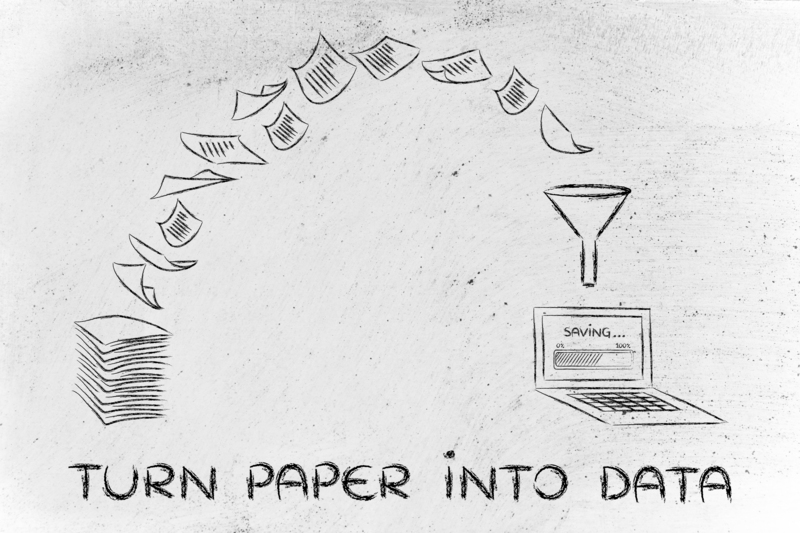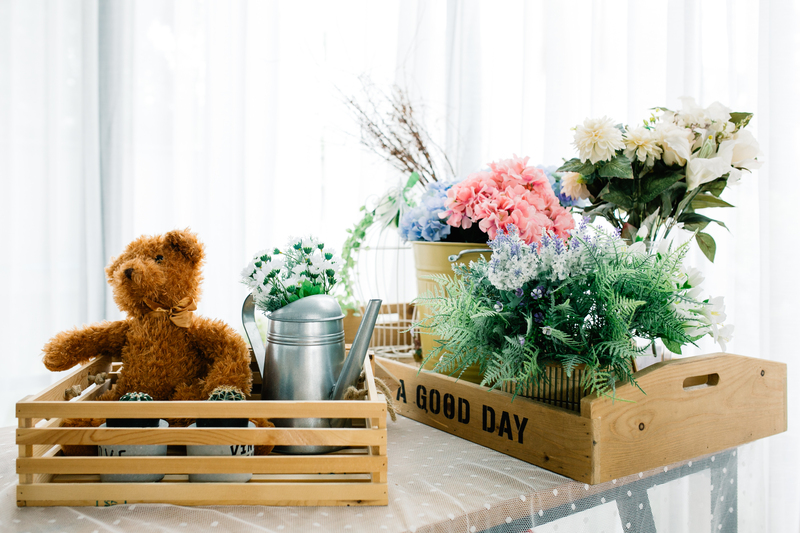Developing Sustainable Pathways for Packaging and Cardboard Waste
Packaging waste--especially cardboard--has become a pressing environmental concern as global e-commerce rises and consumption patterns change. The impact of packaging and cardboard waste on our planet is significant, contributing to resource depletion, landfill overflow, and increased carbon emissions. As consumers, businesses, and policymakers strive for a greener future, developing sustainable pathways for packaging and cardboard waste is more important than ever.

Understanding the Challenge of Packaging and Cardboard Waste
Every day, millions of packages are shipped worldwide, most arriving in cardboard boxes or paper-based materials. While cardboard is often seen as a recyclable solution, improper disposal, contamination, and low recycling rates mean that a considerable amount ends up in landfills or is incinerated.
- Global increase in packaging waste: The surge in online shopping, food delivery services, and convenience products has multiplied the amount of disposable packaging generated.
- Challenges in recycling systems: Many regions lack efficient collection and recycling infrastructure, leading to low recovery rates.
- Contamination issues: Food residues, plastic windows, and mixed materials complicate the recycling process for cardboard and other packaging waste.
Why Focus on Cardboard Waste?
Cardboard, often labeled as corrugated fiberboard, is one of the most common packaging materials globally. It is favored for its strength, low cost, and recyclability. However, its environmental footprint can still be significant if not managed responsibly.
- High energy and water consumption in the production and recycling process.
- Landfill methane emissions: When cardboard degrades anaerobically in landfills, it emits methane, a potent greenhouse gas.
- Deforestation: Virgin cardboard production contributes to deforestation and habitat loss.
The Importance of Developing Sustainable Packaging Solutions
A sustainable pathway for packaging and cardboard waste extends beyond recycling. It includes a comprehensive approach of reduce, reuse, recycle, and redesign strategies, aiming for a circular economy where waste is minimized, resources are cycled, and environmental impacts are reduced.
- Minimizing resource use: Sustainable packaging uses less material and encourages the use of recycled content.
- Maximizing collection and recycling: Effective systems ensure that cardboard waste is captured and processed.
- Design for the environment: Eco-friendly designs reduce complexity and improve the recyclability of packaging.
Innovative Pathways to Sustainable Packaging Waste Management
Let's explore some of the most promising solutions for achieving truly sustainable pathways for packaging and cardboard waste.
1. Source Reduction: Rethinking Packaging Design
- Lightweighting: Reducing material thickness or using less cardboard leads to less waste for collection and disposal.
- Right-sizing: Eliminating oversized packaging cuts down on unnecessary cardboard and lowers shipping emissions.
- Alternative materials: Exploring sustainable alternatives such as mushroom packaging, seaweed films, and recycled pulp for certain applications (
- Mushroom-based packaging is compostable and made from agricultural waste, offering a closed-loop solution.
- Fibre-based innovations use recycled or agricultural by-products to form durable new materials.
*Companies like IKEA and Dell have pioneered plant-based and recycled packaging that replace traditional cardboard, reducing waste and carbon footprints.
2. Promoting Reuse Models
- Reusable packaging programs: Retailers and logistic companies implement strategies to retrieve and reuse packaging from consumers--for example, durable cardboard crates, returnable boxes, and subscription services offering reusable mailers.
- Secondary uses for cardboard: Encouraging creative repurposing, such as using boxes for storage or children's crafts, extends their lifecycle before recycling.
3. Enhancing Cardboard Recycling Systems
Recycling remains pivotal in managing packaging and cardboard waste. However, to realize its full potential, several improvements are needed:
- Investment in infrastructure: Upgrading collection, sorting, and processing facilities increases the recovery of clean cardboard fibers.
- Education and awareness: Teaching consumers how to separate and prepare cardboard for recycling reduces contamination rates.
- Technology upgrades: Automated sorting, advanced de-inking, and fiber recovery systems boost both the efficiency and quality of recycled products.
- Expanding recycling accepting programs: Including hard-to-recycle cardboard types, such as coated or waxed materials.
4. Embracing the Circular Economy for Sustainable Packaging
A truly sustainable pathway for packaging waste involves shifting to a circular economy model, where materials are continuously cycled back into production.
- Design for recyclability: Choosing inks, adhesives, and coatings that don't hinder recycling makes used packaging more valuable as a resource.
- Closed-loop supply chains: Companies take responsibility for recovering and reusing their own packaging materials.
- Collaboration: Brands, municipalities, and recyclers work together for shared goals and higher system efficiency.
Best Practices and Success Stories in Sustainable Packaging Waste Management
Retail Leaders Setting Examples
Some of the world's largest retailers have committed to sustainable pathways for packaging:
- Amazon's "Frustration-Free Packaging": Requires suppliers to design packaging that is recyclable and eliminates unnecessary materials.
- Unilever and Nestle: Aim to use fully recyclable or compostable packaging by 2025, favoring cardboard and paper where possible.
- Loop: A platform for reusable packaging models, where consumers return durable shipping containers for cleaning and reuse.
Municipal Initiatives
- Pay-As-You-Throw Schemes: Cities incentivize residents to recycle and minimize waste by charging for waste disposal based on volume.
- Community drop-off points: Easy-access bins in public places increase recovery rates, especially during holiday peaks.
Technological Innovations
- Digital tracking systems: Smart packaging with QR codes enables better traceability of recyclables.
- Robotic sorters: Use AI to improve the efficiency and accuracy of recycling plants.
The Role of Policy in Developing Sustainable Packaging Pathways
Governments play a pivotal role in driving sustainable packaging practices through legislation, incentives, and extended producer responsibility schemes.
- Regulations banning single-use plastics favor cardboard alternatives: Many countries are shifting toward compostable and recyclable packaging standards.
- Recycled content mandates: Policies require packaging to include a minimum percentage of post-consumer recycled materials.
- Producer responsibility laws: Manufacturers are held accountable for end-of-life management of their packaging, spurring eco-design and investment in recycling infrastructure.
Steps Businesses Can Take to Develop Eco-Friendly Packaging and Cardboard Waste Pathways
- Audit Packaging Use: Identify current waste streams and opportunities for reduction, reuse, or substitution with sustainable materials.
- Switch to Recycled and Certified Cardboard: Use packaging certified by FSC or made from high proportions of post-consumer fiber.
- Engage in Take-Back Programs: Participate in or create programs for collecting used packaging for recycling or reuse.
- Educate Customers: Use on-package labeling and marketing to promote proper disposal or return behaviors.
- Set Measurable Goals: Public commitments demonstrate accountability and drive continuous improvement toward zero-waste targets.
The Consumer's Role in Sustainable Packaging Solutions
Every individual can help in reducing the environmental impact of packaging waste:
- Choose products with minimal or recyclable packaging.
- Flatten and clean cardboard boxes before recycling, preventing contamination and ensuring higher recycling rates.
- Support brands using sustainable packaging solutions.
- Consider creative reuse before discarding boxes.

The Future of Sustainable Packaging and Cardboard Waste Management
Innovations on the Horizon
As society strives for more sustainable pathways in packaging waste management, ongoing research and development are yielding creative solutions, including:
- Biodegradable coatings: New plant-based or water-based coatings make traditionally hard-to-recycle packaging more sustainable.
- Edible and dissolvable packaging: In development for food service and instant delivery industries.
- Smart waste sorting: AI and machine learning technologies are enhancing the accuracy and efficiency of recycling plants.
Towards a Circular, Low-Waste Future
The journey to a greener future relies on everyone's willingness to develop sustainable pathways for packaging and cardboard waste. By combining better design, advanced technology, supportive policies, corporate accountability, and individual action, we can transform packaging waste into a valuable resource.
Together, we can rewrite the narrative of packaging and cardboard waste--not as a burden, but as an opportunity for innovation, collaboration, and environmental stewardship.
Conclusion: Embracing a Sustainable Future for Packaging
Developing sustainable packaging pathways requires holistic thinking and cross-sector action. By prioritizing waste prevention, reuse, effective recycling, and eco-friendly design, we can build systems that conserve resources, protect ecosystems, and support a truly circular economy.
It's time for individuals, businesses, and governments to act--because every step taken towards responsible packaging and cardboard waste management brings us closer to a sustainable world.
Key Takeaways for Sustainable Packaging and Cardboard Waste
- Reduce, reuse, recycle, and redesign are the pillars of sustainable packaging solutions.
- Collaboration is essential: No single entity can solve the packaging waste challenge alone.
- Innovation and education pave the way to higher recycling rates and smarter materials.
- Policy and individual action drive systemic change toward a circular future.
Let's work together to develop and implement sustainable pathways for packaging and cardboard waste--for the sake of our planet and future generations.